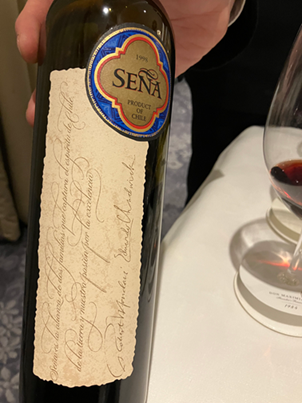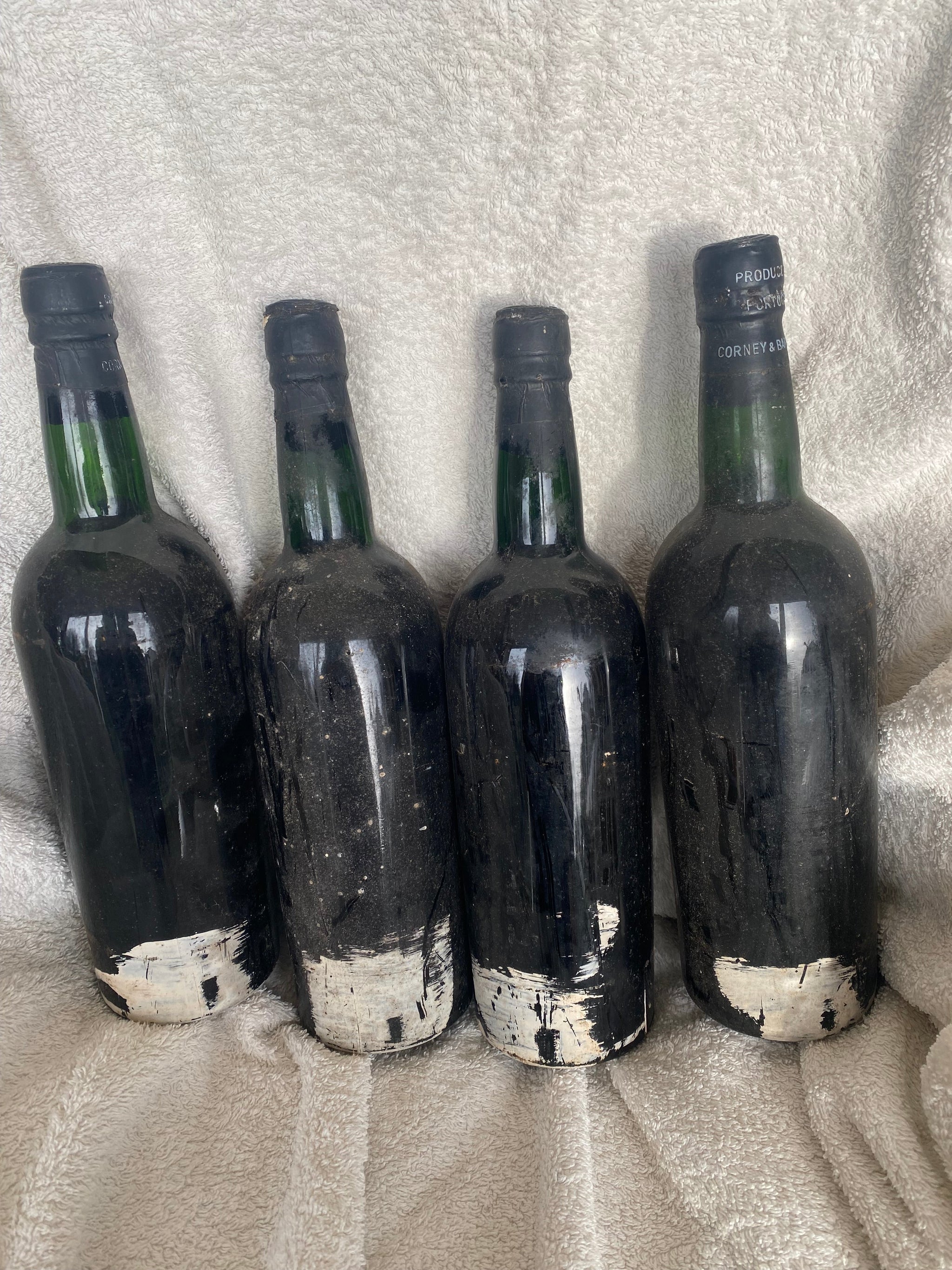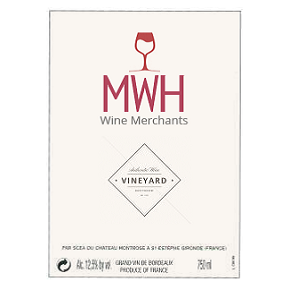Chilean Fine Wines - How Terroir Turned Chilean Wine Into a World Beater
Chilean wines have long enjoyed a reputation for great wines that offer great value. As a wine-producing nation, it’s been blessed with more than its fair share of gifts. The climate lies somewhere between California and Southern France, it offers a wide range of altitudes and soils that are composed of everything from alluvial and clay, to sand, decomposed igneous rocks, and marl. This variety of elements allows for the successful cultivation of everything from Sauvignon Blanc to Pinot Noir and Cabernet Sauvignon. The vine growing area is centred within an 800km stretch (just under a third of the country’s length) that runs from the heat of the Atacama Region down to the cool Bio-Bio Region in the south. All regions are dominated by the effects of the Pacific, yet despite its proximity, most vines need to be irrigated.
Wine has been produced in Chile since the sixteenth century, with the modern industry tracing its roots back to the late nineteenth century. For the vast majority of that time, wineries were focused on producing great value, everyday drinking wines for the mass market. To this day, these remain the backbone of the industry with the majority of Chile’s 1.2bn litre annual production (USDA 2022 figures) falling within this category.
There is, however, a growing number of pioneering producers who are focusing on fine wine production. An increasing understanding of Chile’s exceptional terroir (the complete natural environment in which a wine is produced, including the soil, topography, and climate) and their suitability for certain grape varieties, has given rise to a range of new fine wines. These wines have proved themselves not just the equal of the world’s greatest wines, but their superiors.
The Judgement of the Berlin Tasting
In 2004 ‘One enterprising Chilean wine producer, Eduardo Chadwick’ as Jancis Robinson MW described the winemaking genius behind labels such as Don Maximiano, Sena, and Vinedo Chadwick organised the ‘Berlin Tasting.’ In an audacious move, he invited experts from around the world to a blind tasting in which a selection of his wines would be set against the likes of Mouton Rothschild, Lafite Rothschild, Solaia, Sassicaia, and Latour. The wines all came from the 2000 and 2001 vintages and many had achieved perfect scores from Robert Parker. The results took many people by surprise. Not only did Vinedo Chadwick 2000 come out as the overall winner, but Sena 2001 took the second spot and Don Maximiano Founder’s Reserve was also placed in the top ten. In all, five of Eduardo’s wines took top ten spots.
It was this tasting that would become seen as significant for Chilean wine as ‘The Judgement of Paris’ was for California wine when California’s finest trounced the best of Bordeaux. It added credence to the idea of Chile being a leading centre of fine wine production, and helped wines like Vinedo Chadwick, Sena, and Don Maximiano Founder’s Reserve become the icons of Chilean wine they are today.
Chilean Wine: It’s All About Terroir
“From the best land, the best wines” Don Maximiano Errazuriz 1870
At the root of this triumph is the attention Eduardo has played to terroir. If you’re going to take on the likes of Château Margaux, you need to be sure of your ground. Margaux’s vineyards occupy a unique spot that elevates its wines to a level that even its esteemed Grand Cru near neighbours such as Château Ferriere or Château Durfort Vivens cannot match.
In creating their world-beating wines, Eduardo and his team have taken a site-first approach. Don Maximiano Founder’s Reserve, for example, gets its fruit from three sites in the Aconcagua Valley. These all enjoy a Mediterranean climate with low rainfall (around 120mm) and cool air from the Pacific. Max I, Max II, and Max V are hillside vineyards – Chile’s first – with north and north-easterly exposures. These give long growing seasons with plenty of hang time that allows the fruit to develop exceptional complexity. The soils range from coarse-grained alluvial (Max V), sandy loam with a substratum of stones (Max II), to weathered volcanic diorite with loam (Max I). Just like the great growths of Bordeaux, these individual sites and the sub-sites within them, suit different vines and contribute something to the overall mix so it is far greater than the sum of its parts. It is this understanding of the importance of terroir that has led Eduardo to produce the stunning collection of wines his portfolio now boasts.
A Very Special Chilean Wine Tasting

To celebrate Eduardo Chadwick’s five decades in wine, a tasting was arranged in London to appraise a collection of back vintages of his wines. It was a remarkable event, and I’ve included my tasting notes below. What struck me, aside from the phenomenal consistency and undeniable quality, was:
1. Chilean wines can age and develop over the long term – concerns over the ability of new classic wines – be they from Australia, California, Italy’s super Tuscans, or Chile – to age and develop has dogged these wines from the off. Tasting wines such as the Don Maximiano 2008 (my wine of the day) or the 2000 Eduardo Chadwick proved they can develop beautifully. Even the 1984 Don Maximiano was drinking well, something made all the more remarkable given it was very much an experiment at the time.
2. Chilean fine wines are as subtle and nuanced as any– when tasting fine Bordeaux, people often talk about ‘breed’ and ‘gout de terroir’ (taste of place for want of a better term). These are used to single out individual properties for praise, something that critics have been slower to acknowledge in New World wines, perhaps as wines such as Grange are drawn from so many sites. Wines like Sena and Eduardo Chadwick in particular have these traits. Tasting them side by side it is easy to see the difference in their origins and how it has a direct bearing on their profiles.
3. Chilean fine wines drink well young – while I nearly broke a tooth tasting the Eduardo Chadwick 2021 in 2023 it was so tannic, give these wines just a few years in bottle and they give enormous pleasure. The fruit is plumper and more upfront than in a young Bordeaux, yet they are as stylish, elegant and refined as any of Classed Growth I’ve encountered.
4. Chilean fine wines still represent good value– while the likes of Sena and Eduardo Chadwick aren’t cheap, when compared to their fine wine peers they still offer good value for money. Moreover, wines like KAI and Don Maximiano Founder’s Reserve are just excellent value. The Don Maximiano is a wine to buy by the case on release, lay down and enjoy over the next decade or more. The now sadly scarce, 2008 was a wine that showed beauty and grace in a joyous fashion. It’s certainly a wine I won’t forget in a hurry.
We hope you’ve found this blog on Chilean wine to be of interest. We’re delighted that Chile is flexing its fine wine muscles and we love the fact that while they are producing wines that are as good as any in the world, they’ve retained their attitude toward sensible pricing.
If you would like some wine advice then please do get in touch by calling Mike on 0118 984 4654 or by emailing MWH Wines here. A recognised authority on wine, he’ll be happy to advise you on which wine is right for you.
Tasting Notes

Don Maximiano 1984 – 100% Cabernet Sauvignon – noticeable gradation, but with a deep core. Fragrant, high-toned, rather Cabernet Franc-like. Smoke and undergrowth, red berries. Fresh, tangy, spicy. Very direct. Raspberries and cranberries. Grippy. Amazing for its age. Five minutes later, liquid coffee with smoked red berries.
Don Maximiano2008 – amazingly deep, hardly any gradation, pure cassis, hint of smoke. Luxurious mouthfeel, rich, spicy, almost port richness. Lovey berry fruit, good grip, tannins well integrated and rounded. Minty mineral and earthy finish. Long. Gets grippier with time. Raspberry sherbet to the finish. Glorious!
Don Maximiano2021 – very deep, the nose has some of that plummy/putty young Bordeaux character. Velvety, spike of cassis, sweetness, peppery, plump. Dense. Great breadth. Great future. Five minutes in, taut, tannins coming up, very fresh.
KAI 2021 – 100% Carmenere – leafy blackcurrants, piercing mint, perfumed, but earthy. Minerals are noticeable beneath the fruit. Ripe. Closes down mid-palate. Rounded. Chocolate (milk) blackcurrants (raw), spices, touch of warmth. It seems very supple, but suspect the tannins are buried.
KAI 2010 – very slight gradation. Very deep for its age. Jammier, softer nose. Development is more noticeable on the palate – wood smoke, brambles, roasted coffee, and smoke lingers on the finish. Lovely rich mouthfeel and great balance. Potentially the best Carmenere I’ve ever had.

Sena 1998 – evolved colour, burnt red at the rim. Quite tangy on the nose, lifted and spicy, medicinal, balsamic. Lighter, fresh, but with a caramel, jam edge. Medicinal, touch of sweetness and spices toward the finish. Complete and stylish, with time on its side.
Sena 2015 – very deep, could have been bottled yesterday. Cabernet nose. Cassis, muted by chocolate and plums/fruits of the forest and strawberries. Lovely freshness and fruits – red and black berries. It is refined, subtle, nuanced and very long.
Sena 2021 – very deep, roasted black and red berries – baked blackberries – great depth, seemingly endless. Again, lighter and fresher, but with lovely purity of fruit and a real raspberry lift to finish. Well-integrated, rounded tannins. Juicy. With gentle spice and noticeable minerals, this is lovely now, but you can see it has much more to give.
Vinedo Chadwick 2014 – no gradation, very subtle nose, refined, no sharp edges, harmonious, raw currants and smoke coming through. Rounded, beautifully structured, velvety, precise, everything in the right place, soft spices, velvety texture, red berry lift on the finish.
Vinedo Chadwick 2000 – only slight gradation – smoky nose, sweet palate, very New World, lovely concentration. Mulberry, a touch of jam, but subtle, elegant, ripe and rich. Compelling, complex, young, very sweet note to the fruits. Very firm finish. This will go on and on.
Vinedo Chadwick 2021 – Inky, fantastically complex, deeply fruity, sweet balsamic, strawberry. Balanced and refined, tannic, but overlain by such great fruit. Brambles, minerals, so concentrated and yet so precise. Very impressive.

